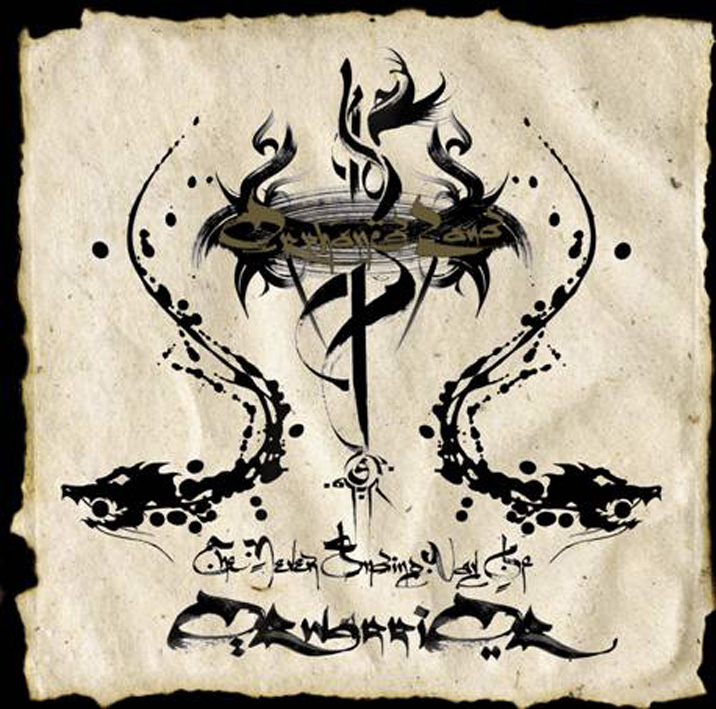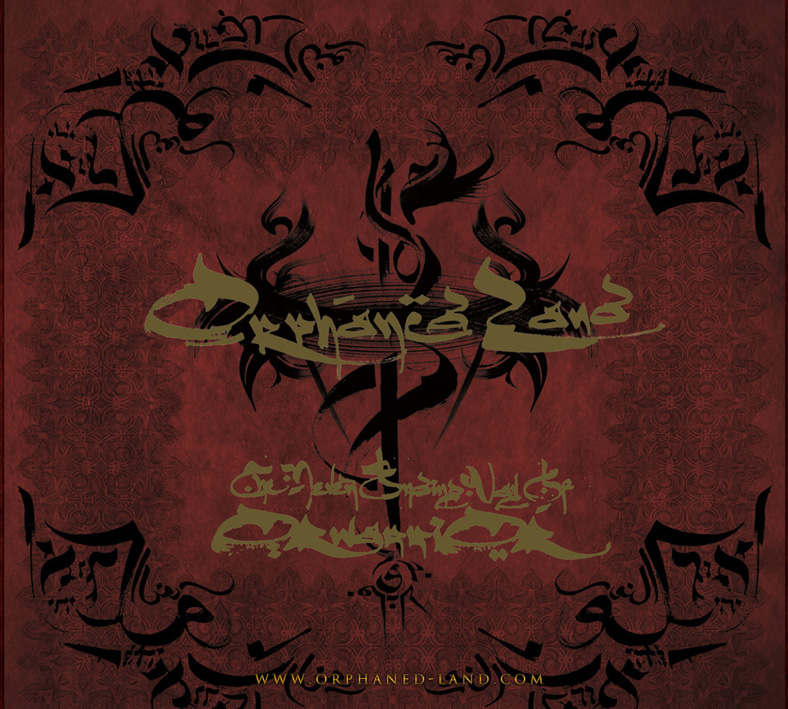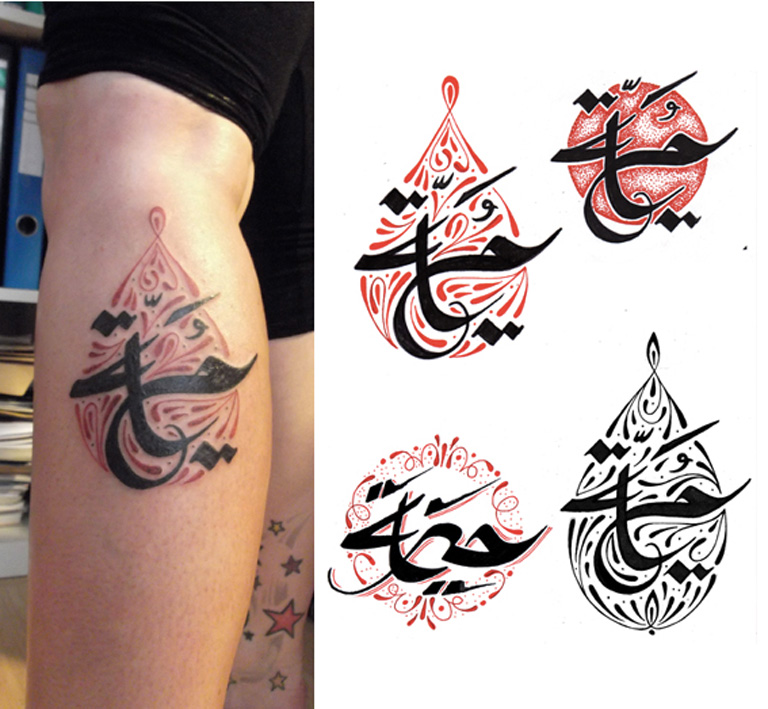To learn Arabic script calligraphy in the traditional way, you first
find a master calligrapher (someone who is licensed to teach) with whom
to study. Though resources exist to help you learn calligraphy on your
own, you will be most successful if you study one-on-one with an artist.
Visit our resources page for help on locating a teacher or class.
The script you study depends on your background and interests. Many beginning students start with the Riq‘a script because it is smaller and simpler than other scripts. Once you have mastered Riq‘a, you can move on to more complex scripts such as Thuluth and Naskh.
Today, all kinds of artists use calligraphy in their work—sculptors, painters, graphic designers, graffiti artists, digital artists, silkscreen artists, etc. Despite these artists’ wide range of styles and their use of vastly different materials, all somehow incorporate calligraphy into their work.
Much of this art is far removed from the traditional calligraphy tradition of using pen and paper to write according to a set of rules. Especially as art becomes more abstract, writing and letters lose their legibility, and are used for their symbolic meaning and aesthetic beauty.

Khaled Al-Saai. Untitled. 100x150cm. Acrylic on Canvas. 2007.
Syria/U.A.E. Image courtesy of the artist.
 By ZenTwo
By ZenTwo




 l
l


















All is he by
In recent decades, digital technologies such as the OpenType font format have enabled the creation of new typefaces that represent the Arabic script more accurately. This has liberated typographers (people who create typefaces) to wrestle with more aesthetic considerations. For example, to what degree should typefaces look like calligraphy? Should typography remain rooted in its calligraphic past, or break from these roots so it can better meet the requirements of modern electronic media, such as cell phones and computer screens? As typographers struggle to answer these questions, they have developed many high-quality typefaces for the Arabic script, and we are likely to see significant progress in Arabic type design in the coming years.









Visual Dhikr. Iqra.

Dubai International Finance Center. Work by Wissam Shawkat. Iraq/U.A.E.

Work by Wissam Shawkat. Iraq/U.A.E.

This composition was created on treated handmade paper,
using calligraphy ink. Work by Wissam Shawkat. Iraq/U.A.E.

This composition was created on treated handmade paper,
using calligraphy ink, in the Jali Thuluth style.
Work by Wissam Shawkat. Iraq/U.A.E.

This composition was created on treated handmade paper, using calligraphy ink,
in the Jali Divani style.
Work by Wissam Shawkat. Iraq/U.A.E.

This composition was created on treated handmade paper, using calligraphy ink,
in the Jali Divani style.
Work by Wissam Shawkat. Iraq/U.A.E.
The script you study depends on your background and interests. Many beginning students start with the Riq‘a script because it is smaller and simpler than other scripts. Once you have mastered Riq‘a, you can move on to more complex scripts such as Thuluth and Naskh.
Today, all kinds of artists use calligraphy in their work—sculptors, painters, graphic designers, graffiti artists, digital artists, silkscreen artists, etc. Despite these artists’ wide range of styles and their use of vastly different materials, all somehow incorporate calligraphy into their work.
Much of this art is far removed from the traditional calligraphy tradition of using pen and paper to write according to a set of rules. Especially as art becomes more abstract, writing and letters lose their legibility, and are used for their symbolic meaning and aesthetic beauty.

Khaled Al-Saai. Untitled. 100x150cm. Acrylic on Canvas. 2007.
Syria/U.A.E. Image courtesy of the artist.
 By ZenTwo
By ZenTwo


Hassan Massoudy. Zahra. Ink on paper. Iraq/France. Image courtesy of the artist.


Divani Alphabet
 l
l
Image courtesy of Iranian-born artist Jila Peacock, working in Scotland

Image courtesy of Iranian-born artist Jila Peacock, working in Scotland


Image courtesy of Iranian-born artist Jila Peacock, working in Scotland

Image courtesy of Iranian-born artist Jila Peacock, working in Scotland

Khaled Al-Saai. Untitled. 100x150 cm.
Acrylic on Canvas. 2007. Syria/U.A.E

Khaled Al-Saai. Untitled. 100x150 cm.
Acrylic on Canvas. 2007. Syria/U.A.E

Khaled Al-Saai. The Sea: Poem by Mahmoud Darwish.
Water Colour, Acquarell on Paper. 2006. Syria/U.A.E.

Khaled Al-Saai. Thuluth Style Bird from Paradise.
Water Colour, Gouache,
Gold and Ink on Paper. 2006. Syria/U.A.E.


Work by Mamoun Sakkal. Syria/United States.

Work by Mamoun Sakkal. Syria/United States.

Mehdi Saeedi. The 14th music festival (Zekro Zakeri)
Ritual Music Festival. 2004. 100 x 70 cm. Iran.

Mehdi Saeedi. The International Conference of
Safi Edin Ormavi (Musician).
2004. 70 x 100 cm. Iran.

Mehdi Saeedi. Molavi (The Second Iranian Typography Exhibition).
2004. 100 x 70 cm. Iran.

Mehdi Saeedi. The 18th Fadjr International Music Festival. 2003.
100 x 70 cm. Iran.

Iranian Spring by Mehdi Saeedi. 2004. Iran.

All is he by
Mehdi Saeedi. 2004. Iran.
Let me go back to Cairo.
Native Maqari & ZenTwO. France.
5km to Sakkarah. Native Maqari & ZenTwO. France.
Will work for Peace. Native Maqari & ZenTwO. France.
Don't Push Me Coz I'm Close to the Edge. Native Maqari & ZenTwO. France.
Work by Nja Mahdaoui. Tunisia.
Work by Nja Mahdaoui. Tunisia.
Work by Nja Mahdaoui. Tunisia.
Calligraphy and typography
The printing press was not widely adopted in the Middle East until the 19th century because the technology used to set Arabic type on the press was cumbersome and produced unappealing results. The Arabic script is complex – the letters are connected to each other, and each letter changes shape depending upon the letters around it. With traditional metal-set type, it was difficult to replicate the vast number of shape arrangements that were needed to print a lengthy text. This early printed material was visually grating to someone accustomed to reading calligraphy.In recent decades, digital technologies such as the OpenType font format have enabled the creation of new typefaces that represent the Arabic script more accurately. This has liberated typographers (people who create typefaces) to wrestle with more aesthetic considerations. For example, to what degree should typefaces look like calligraphy? Should typography remain rooted in its calligraphic past, or break from these roots so it can better meet the requirements of modern electronic media, such as cell phones and computer screens? As typographers struggle to answer these questions, they have developed many high-quality typefaces for the Arabic script, and we are likely to see significant progress in Arabic type design in the coming years.

Work by Reza Abedini. Iran. Image courtesy of the artist

Work by Reza Abedini. Iran. Image courtesy of the artist

Work by Reza Abedini. Iran. Image courtesy of the artist

THÉ KAF
Artist: Ali Omar Ermes. 1945. 151.9 x 102.5 cm. Courtesy of the Arthur M. Sackler Gallery, Smithsonian Institution.

Visual Dhikr. 'La ilaha ill Allah.' Oil on Canvas. 46" x 36." July 2008

Visual Dhikr. SAAD

Visual Dhikr. Ya Rabb.

Visual Dhikr. Bismillah ar-Rahman ar-Rahim.

Visual Dhikr. Iqra.

Dubai International Finance Center. Work by Wissam Shawkat. Iraq/U.A.E.

Work by Wissam Shawkat. Iraq/U.A.E.

This composition was created on treated handmade paper,
using calligraphy ink. Work by Wissam Shawkat. Iraq/U.A.E.

This composition was created on treated handmade paper,
using calligraphy ink, in the Jali Thuluth style.
Work by Wissam Shawkat. Iraq/U.A.E.

This composition was created on treated handmade paper, using calligraphy ink,
in the Jali Divani style.
Work by Wissam Shawkat. Iraq/U.A.E.

This composition was created on treated handmade paper, using calligraphy ink,
in the Jali Divani style.
Work by Wissam Shawkat. Iraq/U.A.E.
Calligraphy and politics
A few artists use calligraphic art to express political views on a wide variety of subjects. Commonly-addressed issues include the rights of women in the Islamic world, the tensions between Israel and Palestine and the recent wars in Afghanistan and Iraq.
"Beautiful calligraphy gives truth more clarity."
~ the Prophet Mohammed (peace and blessings be upon him)
~ the Prophet Mohammed (peace and blessings be upon him)







í thiñk thé most intrésting art, i shóuld t®y with my ðáúgh†ér précisé d®åwíñg mångá
ReplyDelete♥\ (^ o ^) /\ (^ o ^) /\ (^ o ^) /♥